Marinero – 3
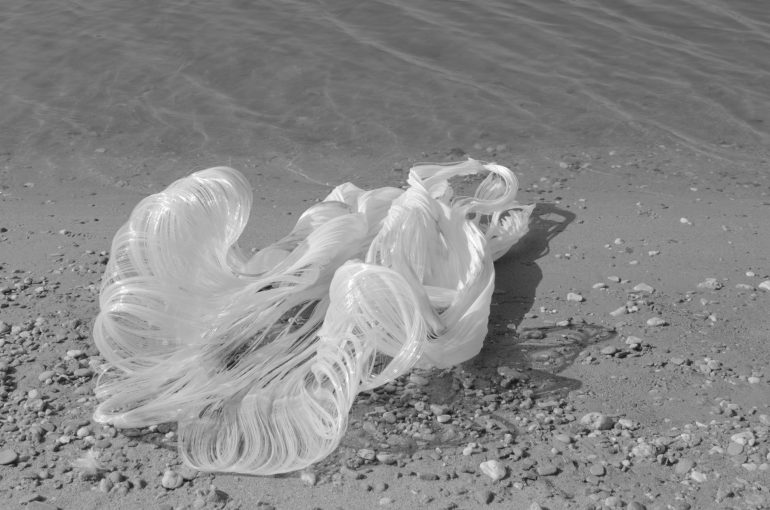
*Filament analysis
The first Empa yarn tests are completed. This is very helpful information. We will follow up on improving both prototypes of the Archi-Filaments.
Sample preparation: 3 yarn samples aligned per specimen. One end of yarn fixed with tape and the second end not fixed (paper stripe under tape). Yarns placed on the rastered mat not sensitive to humidity and liquid moisture. 2 specimen tested: Aitex and WoodKPlus. Chosen yarn length was corresponding to the scale of human body and size of garment panels (50cm).
Conclusions:
1) none of the yarns shows any reactivity with air humidity (vapor form). Although there seems to be a tendency for WoodKPlus yarns, their SD magnitude excludes any significant effect.
2) WoodKPlus yarns seem to be more fragile and elastic, which prevented precise manual measurement of its length. Even smallest force applied to keep the yarn straight for the measurement could possibly influence its elongation. This is a plausible reason for the high SD for this specimen.
3) water spraying induced irreversible reaction only in Aitex yarns expressed as tangling of the yarn. This effect was however not visible when spraying water onto the knitted structure. Since in knitted structure the yarns are relatively well-tangled the effect of water did not induce any additional visible effect. This could be however otherwise in a woven fabric, where the yarns are straight within the fabric structure and possible could tangle with a visible wet effect.

–
*Rain vs sweat
”Tailored by weather” versus ”tailored by sweat” research analyses
-> PANAMA – mono-filament warp & PVA yarn weft.
– Underneath on the left you can see the technical drawing of the tailored by weather. – Underneath on the right you can the technical drawing of the tailored by sweat.
-> Conclusion
– Weather effect (LEFT) = accentuates the body shapes by bursting effect.
> Rain, humidity, snow, wind and sun warmth have a direct influence on the deforming process. – Empa sweat robot effect (RIGHT) = specific body parts moisture ”chest, waist, hips and upper leg”. > Material adapts to the sweat areas ”figure hugging” This could be interesting from a thermodynamic point of view.
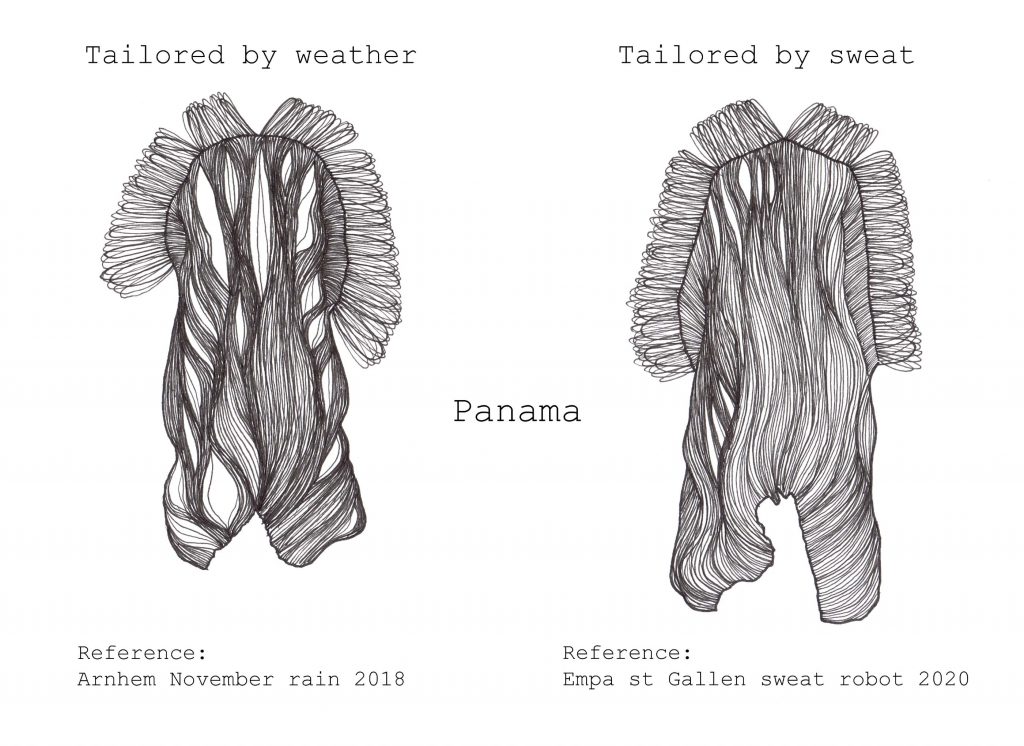

-> SATIN – mono-filament warp & PVA yarn weft.
– Underneath on the left you can see the technical drawing of the tailored by weather. – Underneath on the right you can the technical drawing of the tailored by sweat.
-> Conclusion
– Weather effect (LEFT) = very linear and stiff pleats effect.
> Rain, humidity, snow, wind and sun warmth have a direct influence on the deforming process. – Empa sweat robot effect (RIGHT) = dynamic stiff pleats effect versus creamy satin effect. > Very interesting to see: ”chest, waist, hips and upper leg” sweat parts forcing the material to deform. > Moves away from the body creating an abstract 3D effect. > Aesthetically the most interesting from the sweat robot experiment.
-> Overall conclusion
– Effect rain is all over the body. Effect sweat robot is on specific body parts.
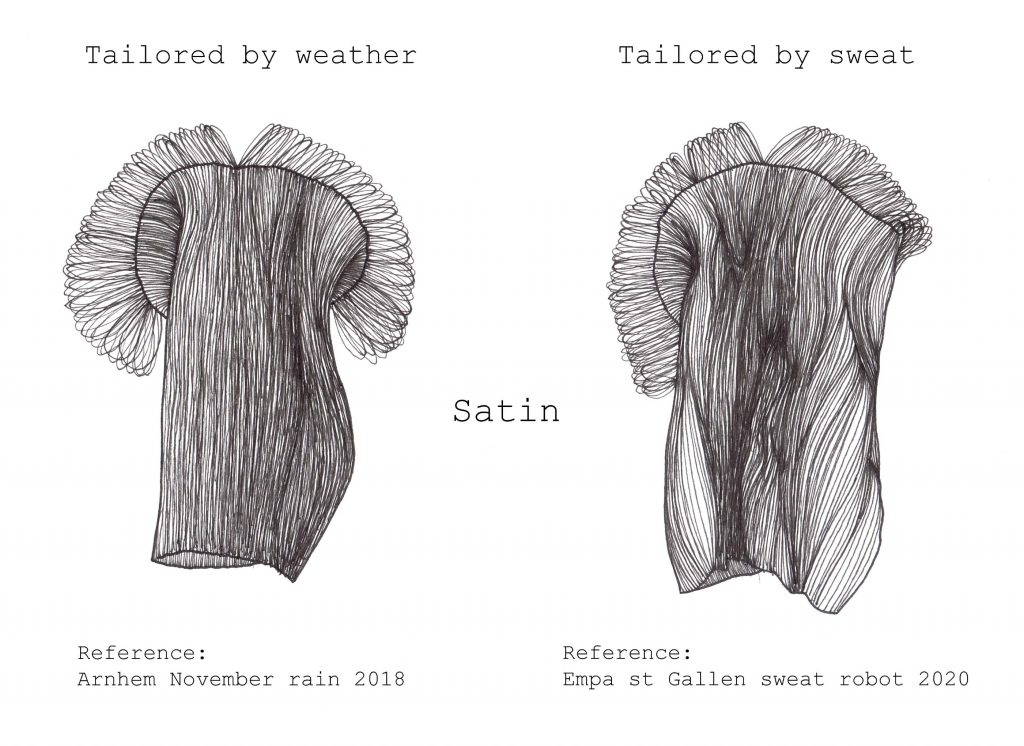
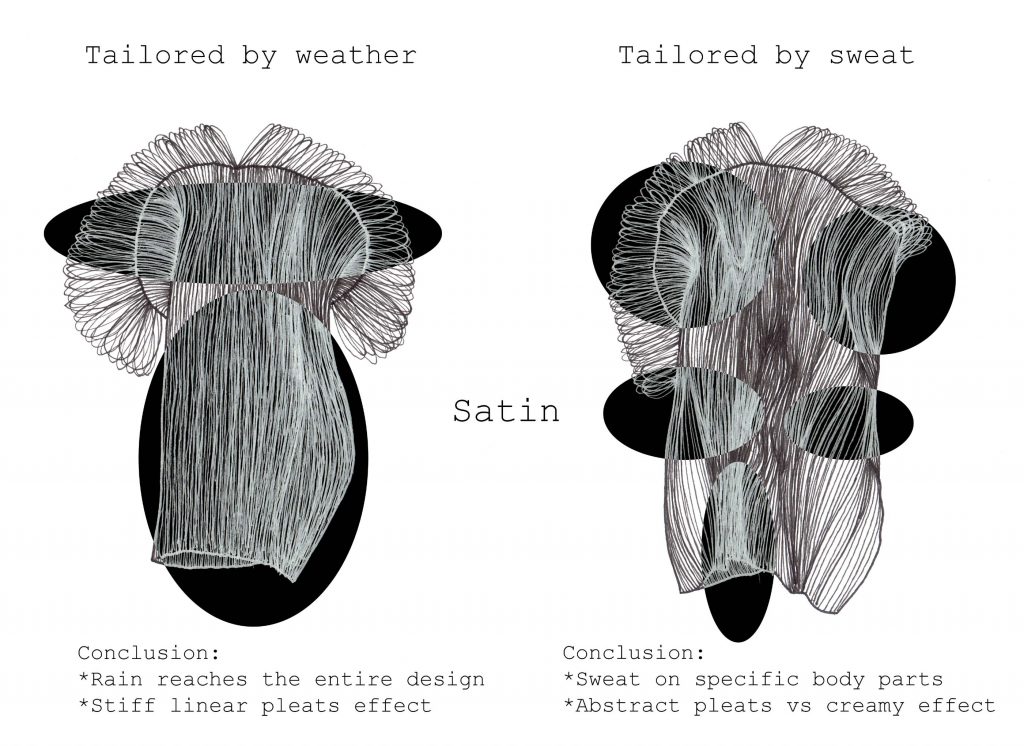
–
*Mannequin formation
The first steps to create the tailored by weather installations have been made. Studio Adaptive Skins commissioned Harmen van Liemburg and Bart Nijboer to work on the installations. These amazing talented artists are based in Arnhem. We all work in the same area named ”Former Kema electricity factory / Energy business park Arnhems buiten”. This is very nice because we can collaborate closely together. *Harmen is an artist/ graphic designer/ screenprinter, mostly working on the autonomous side of the professional spectrum. *Bart is an artist specialized in spatial images that are composed of different forms and objects, referring to processes in nature. -> The creation process started with meeting at the studio of Harmen. Here we prepared the working plan and also admired the beautiful work of Harmen.
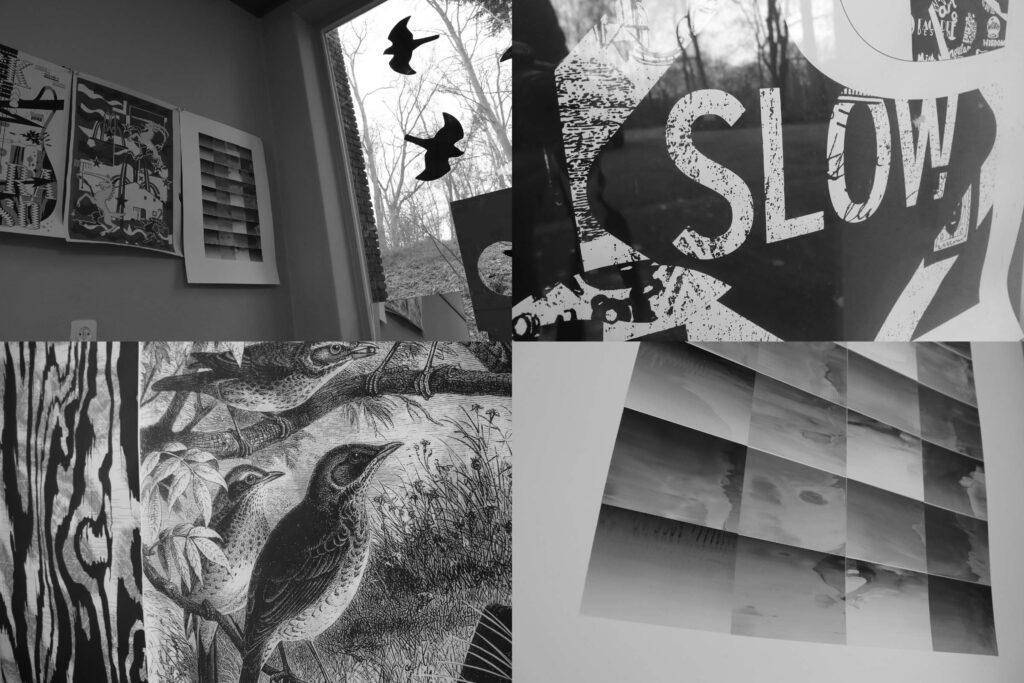
The working plan starts with: Jef managing the whole process, Harmen will work on customizing the mannequins, Bart will produce the installations and Lennart will focus on creating the technical drawing + manuals ”on how to make the installation?”. The 30 mannequins are second hand torsos from Gruppo Corso Utrecht. The torsos need to eventually be camera ready for the time-lapse documentations. This means that they will need to be painted black, to create a contrast with the white Marinero garments. They will be all painted black by hand.
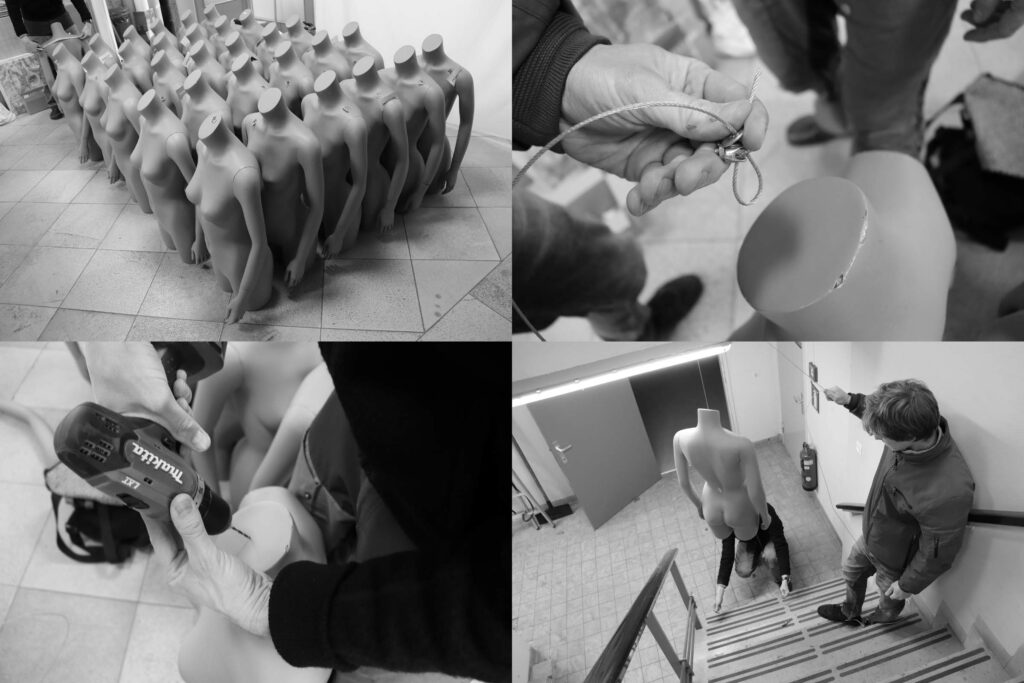
The first challenge already came with a technical question: ”How to make the mannequins fit isolated within the steel construction frame?.” The idea is that the mannequins must not move during the filming process (day and night filming for max 2 months). We will test some more by drilling holes in the neck and knee parts, to see the tight hanging effect with steel wire. There will be more challenges involved following up towards the deadlines in May. We are starting to already get excited!

–
*Filament challenge
March is an exciting month during the project. All deadlines for the Archi-Filament production need to be finished and shipped to TextileLab Tilburg before the end of this month. My filament creation mentor Jaime Gonzales from Aitex has been preparing the production of the Aitex Archi-Filament. During the production process the idea was to order materials from Aitex partners. Unfortunately because of the lack of time left Jaime was forced to produce all the yarns in Aitex. He has worked very hard to push the production of the Archi-Filament. Studio Adaptive Skins is very thankful to him that he could manage to complete the idea of the Archi-Filament. 60KM are scheduled to be finished medio March and I have all the faith that this will turn out successfully. So all the props for this stage of the project go to Jaime. Muchas gracias!!!

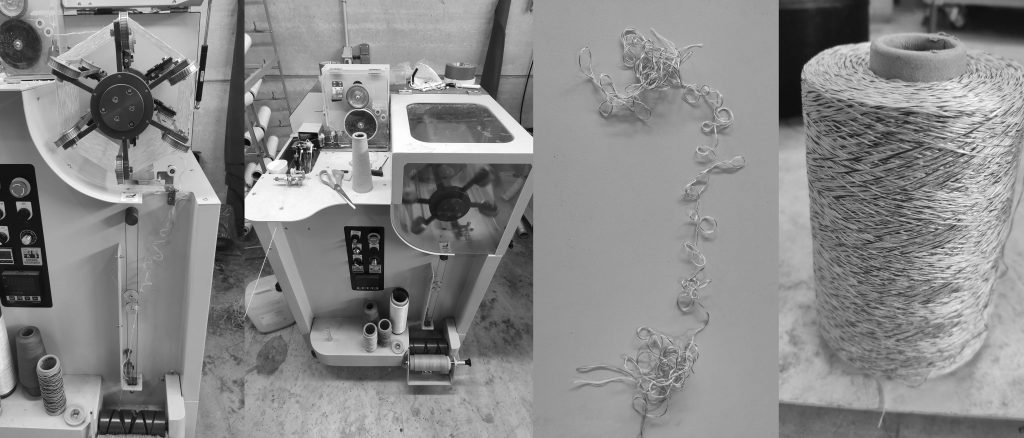
The process of Wood K Plus goes into another direction. We are still in the experimental fase. Jurgen and Konrad from Wood K Plus did an amazing experiment for the first Archi-Filament test. But the challenge is that this technique still needs to be discovered. They did not know what mix of polymers were used for that specific experiment. So they need to ask and work with a chemist to find out the right balance and duplicate the same technique again. With Aitex we are focusing on the dipcoating technique and with Wood K Plus we are focusing on the melt coating technique. The same concept of the Archi-Filament, but executed in totally different ways. The status right now for Wood K Plus is that we will look what we can still do with the time left. If we find something that works over the next weeks we can try to produce 10KM minimum. With this amount I can use the filament to create at least 1 weaving and 1 knitting fabric prototype.
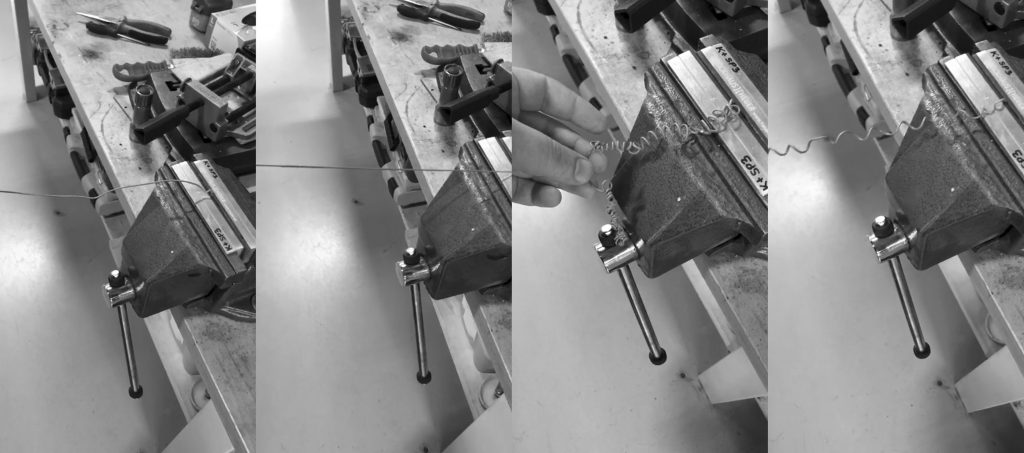
–
*Material evolution
This question has been asked many times before: Was it a fashion show or performance art? None of those things actually! Since 2013 we have been researching on deforming materials. I have had a working relationship with TextileLab Tilburg for over the last 5 years. We made several prototypes of new materials. But this process required a lot of patience. This step by step approach motivated me to create presentations where I could analyse direct effects of pigments and water.
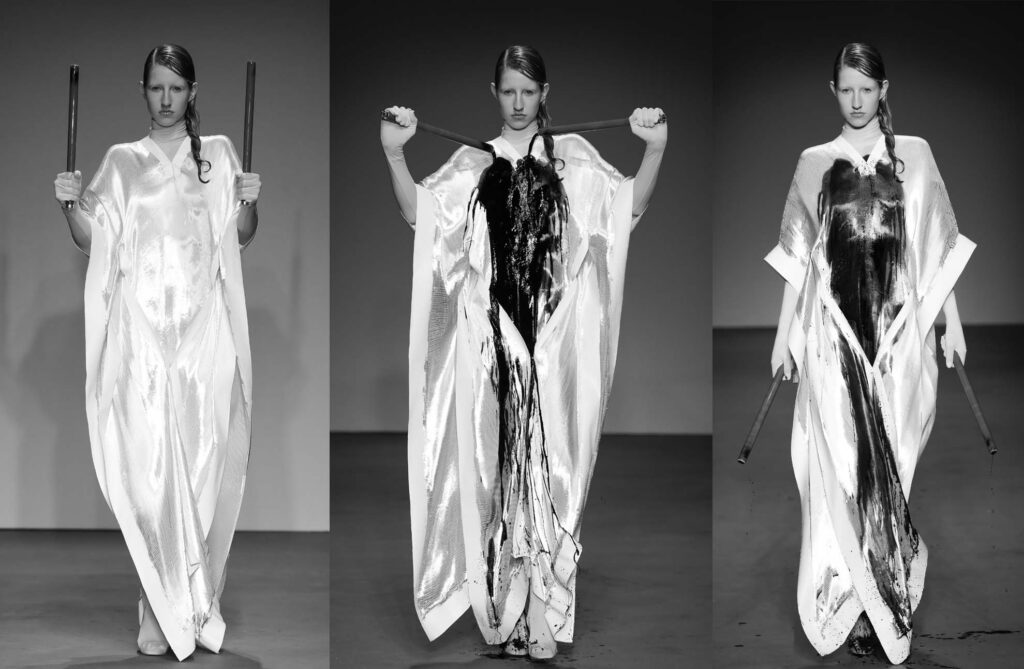
The dialogue between the body and material deformation were key research points. It started with me wanting to change the TextileLab machine. This request has been on the table for many years. The random warp from the TextileLab machine is a white cotton. But in my case I needed a more architectural yarn, like for example: white or transparant monofilament.
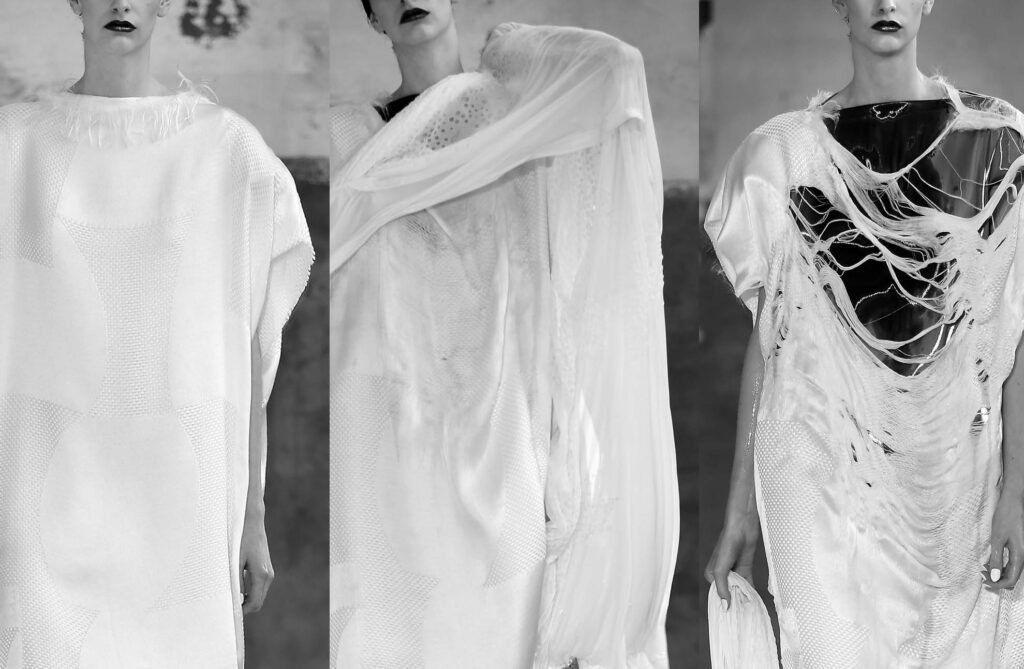
There is a technical challenge on replacing the warp from an industrial machine. So we started with accepting the white cotton warp for the first experiments. TextileLab produced a single layered woven fabric. During those catwalk experiments I saw that the dialogue between pigment and water were instantly effecting the PVA yarns. However, the dress completely dissolves. So it is more an effect rather then creating a new shape technique.
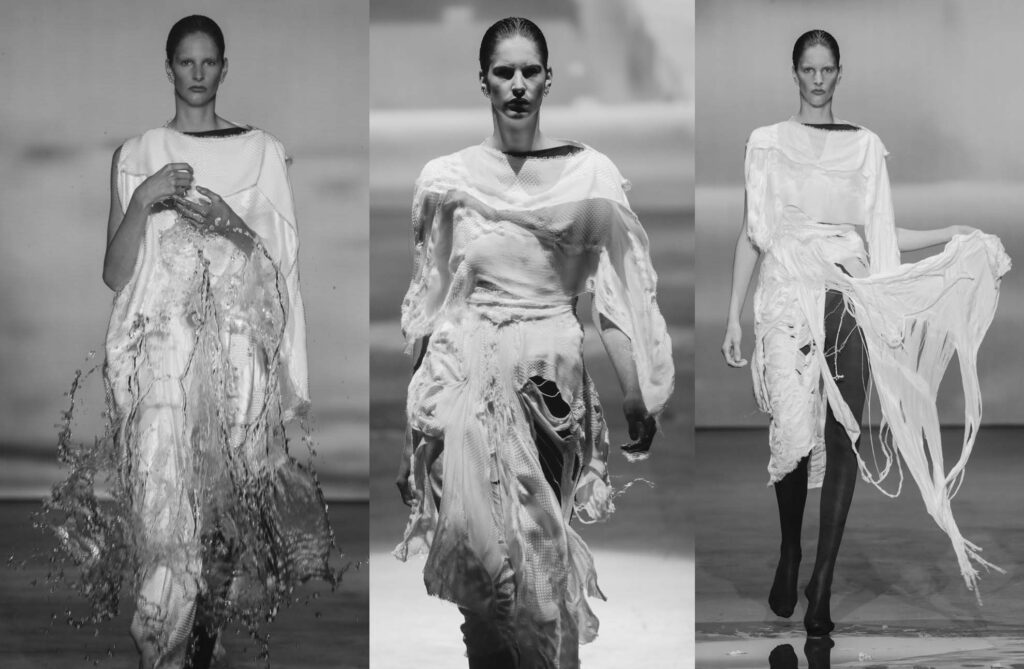
During the second stage I stepped away from pigment and replaced the white cotton warp with a black cotton warp. This way we could simulate color effect by the transforming character of the fabric. We produced a double woven fabric with an upper-layer of PVA weft + back-layers with black cotton warp and black cotton weft (double). The fabric initially looked silver, but in contact with water it created abstract ink patterns.
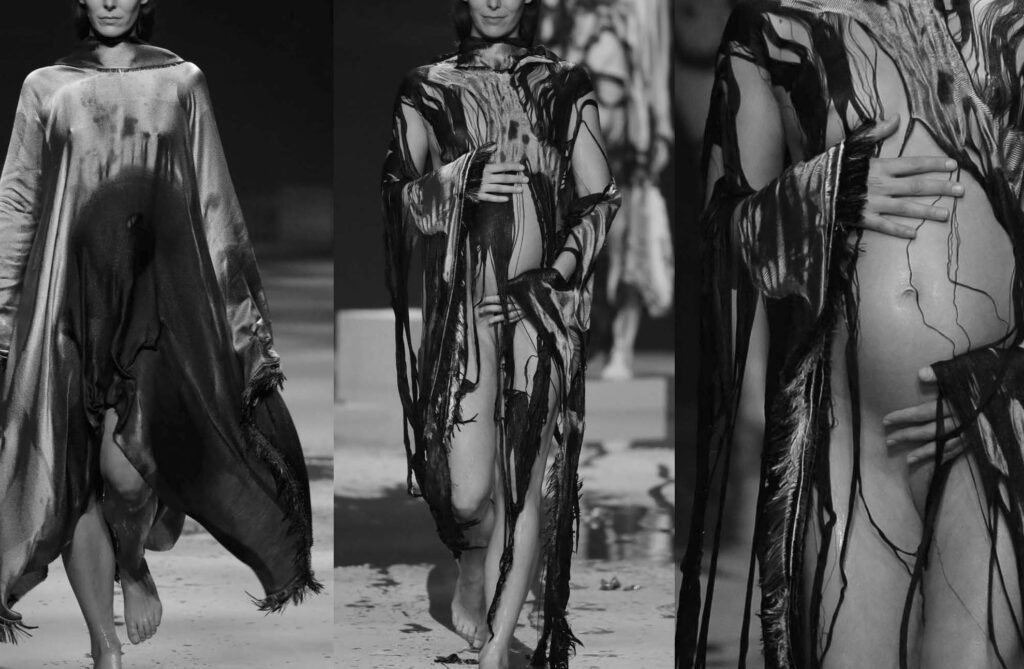
After a few years we could enter the third stage, using the monofilament warp. We were able to finally produce what I had in my mind for many years. During that time a few artists and myself were scheduled to use the monofilament warp. It was a fun moment for us to experiment with new techniques. In my case I used the monofilament warp with the PVA weft. During the steam installation experiment in Paris we finally could simulate a deforming shape. It was a successful presentation that inspired me to create a new chapter.
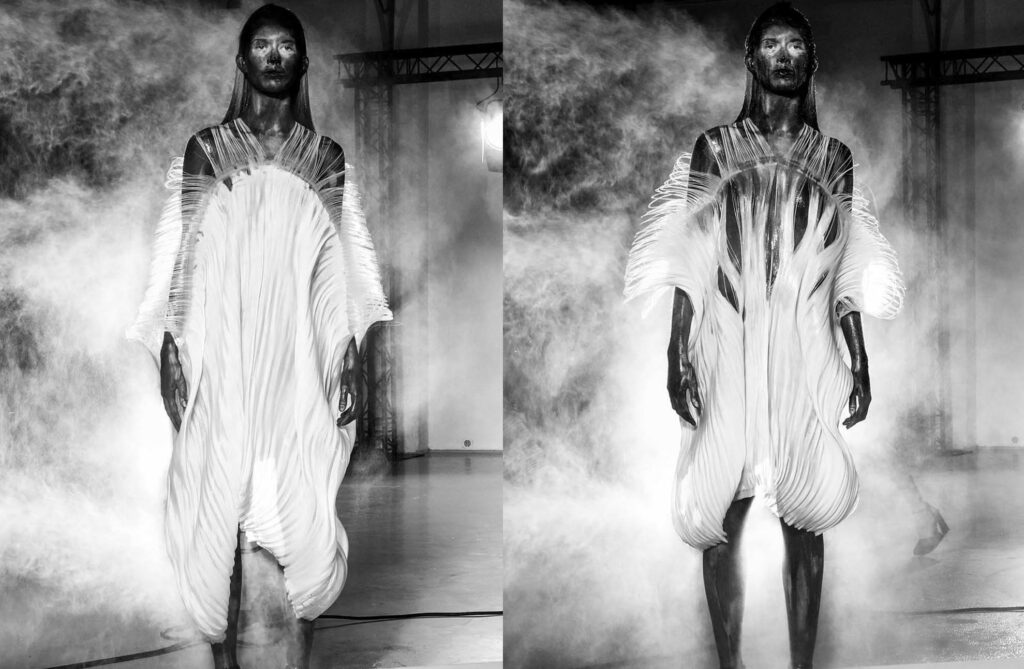
The forth stage is dedicated to project Re-FREAM. With the monofilament warp in mind I want to now change the properties of the weft. This new challenge is to create a new yarn. The dissolving PVA will be re-used as a coating to create a special new yarn. This yarn has the concept of creating shape of its own. It will be so exciting to see how the Adaptive Archi-Filament creates new shapes during the tailored by weather experiment.
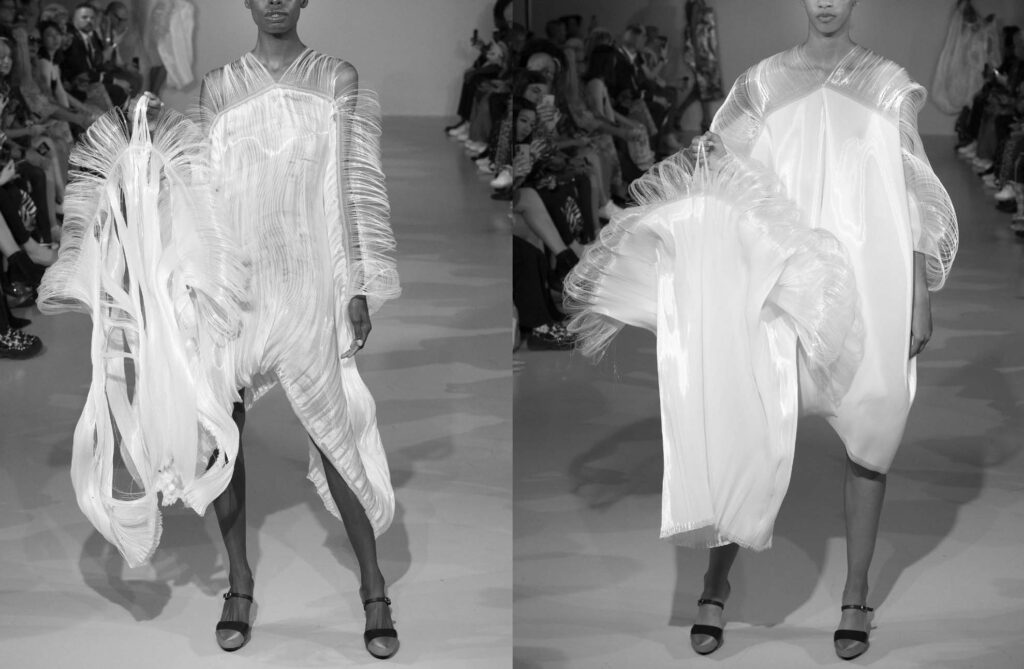
Photo´s by: Team Peter Stigter & Simon Armstrong
–
For more info visit: www.studioadaptiveskins.com





